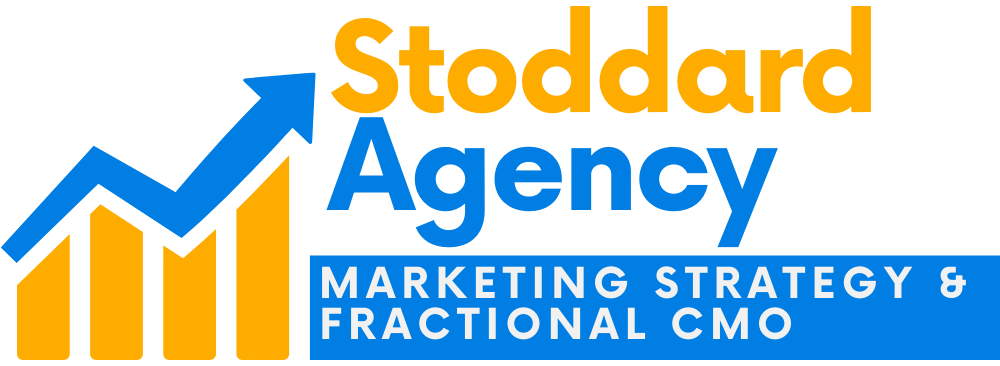Home Services Contractor Business Report Reveals…
How to Expand Into More Cities and Service Territories
…And how to get leads in a new area even if there is fierce competition and nobody’s heard of your company there.
If you are thinking about how to expand into more cities and service territories, you need to hear this. Here is a proven system for getting leads in a new area even if there is fierce competition and nobody’s ever heard of you there. You will also learn my unique formula to get as many prospects to call you as soon as possible.
This is a proven method to get leads in new cities and service territories for home services businesses. This method is proven to work even if there is fierce competition in that area.
If you are a new home services contractor company, or if you have been in business a while and want to expand into new cities or service territories as rapidly as possible, here are some things you need to know. The information below describes:
- Overview of the market situation for home services
- 14 Strategic Home Services Market Expansion Lead Generation Strategies
- The results that can be achieved by properly deploying a marketing strategy
Overview of the market situation for home services
The market for home services in the US is expanding rapidly. According to Locus.sh, an automated supply chain service company, the on-demand home services market will grow to $1,574.86 billion by 2024. Home service businesses such as cleaning crawl spaces, insulation, repairs, plumbing, and electrical are USA’s most popular on-demand home services.
Verified Market Research estimates that the US Home service market will be valued at $1219.07 billion by 2026, with a compound annual growth rate (CAGR) of 35.81% from 2019 to 2026. The compound annual growth rate is a measure of the performance of a financial investment from the beginning to the end of a cycle. The CAGR value equals the rate of return (ROR) on the investment.

The reason home services are in such high demand is vast and includes several factors.
- The onset of Covid forced many people to live and work at home, which placed a demand on the home’s inner workings, not to mention that it forced people to spend a lot of time staring at their “honey-do” lists.
- The increasing speed of technology has made way for faster, smarter home gadgets, devices, appliances, faster internet, more mechanisms, services, and more things that break and need repair within and around the home.
- Smartphones and computer technology plus online companies have opened up the world to people’s homes. Anyone can get anything at any time. Smartphones allow marketers to improve their daily strategies, help business owners expand, and influence how consumers live daily.
If you own a home services business, then growth is a positive, but that means your competition is also growing. You may have success in your home location, but moving forward into new territory will be a new challenge. Fortunately, there are solutions to the problem that your competitors do not know.
14 Strategic Home Services Market Expansion Lead Generation Strategies
Expanding your home services business to new territories means new marketing techniques to reach your customers. There are several excellent ways to branch out using approaches through digital marketing such as lead generation, email marketing, snail mail, SEO optimization, social media channels, and, of course, digital and commercial advertising. We’ll talk about a few of these methods here.
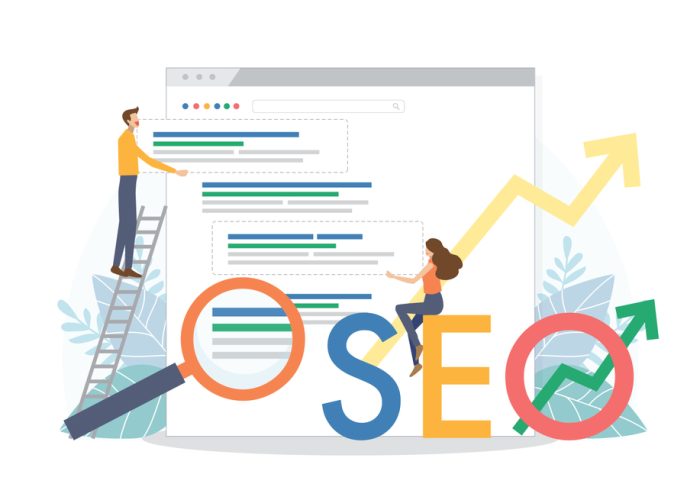
The “SEO Blitz”
The first step to ranking for any keyword is to create relevant, consistent, and authoritative content. SEO Blitz focuses on creating thousands of high-quality pages across various topics in hundreds of different locations. The strategy requires planning and foresight that most companies do not have the time or resources to invest in. However, these pages will eventually become a huge asset that can also be used as citations in backlinking campaigns and link-building strategies, which ultimately help you dominate the organic search in any area you wish to move into.
The word “Blitz” is used here to describe the speed at which these pages are created and optimized. It requires a very fast developer or a templating system on the back end of your website to spin out pages fast. Also, it is crucial that each page has unique content! If you try to have the same content repeatedly, Google will punish you, and it will be counterproductive. What makes this a “blitz” instead of just a normal SEO strategy is the speed at which these pages are made. It takes months for SEO to be effective and bring in leads, so the faster you produce these pages, the better.
An “SEO Blitz” is a program for home services trades contractor businesses who want to establish the most effective local SEO strategy for the primary service pages and most sought-after keyword rankings, using “pillar” cities (the larger hubs in an area or county), and then adding smaller cities around the primary ones.
The content strategy is built around a keyword map and content index that can be used for multiple cities and services by organizing all cities and target keywords in one matrix. This enables your marketing team or SEO agency to create many local pages for the primary service pages needed in key areas. They are all clustered around the pillars of the primary cities and then spread out like spokes on a wheel to hit the smaller pockets around the hub cities.
To give you an idea of how to set up an SEO Blitz for your business, think of a keyword map and content index as a foundation, where you take all the primary services and turn them into target keywords you want to rank for (after researching using tools like SEMRush or AHREFs. Take your primary service pages, like “Insulation Removal,” or “Hot Water Tank Removal and Replacement,” etc., and then create local pages in key areas for them, such as “insulation removal Seattle.”
In the end, you’ll have pages for each keyword and each city or town. They are all clustered around the pillars of the primary cities and then spread out like spokes on a wheel to hit the smaller pockets around the hub cities as well. All of these are well organized in your website page structure, in your site index, and easily crawled and categorized by Google and other search engines.
GMB (Now Google Business Places or GBP) “Strongholds”
You’ve got a great business, and you’re ready to take it to the next level. If you’re a service business owner, there’s a good chance you are looking to expand your services to new cities.
If that’s the case, I have some good news and some bad news for you. The good news is that it’s possible to set up satellite Google My Business (GMB) location pages (listings) in primary business hubs (major cities). The bad news is that most service business owners underestimate the importance of setting up satellite GMB location pages (listings) in primary business hubs (major cities).
Google My Business is a free tool that helps consumers find local businesses like yours on Google Search, Google Maps, and the GMB/GBP. This is important because nearly half of all mobile searches are related to location, and 80% of mobile searchers start their search with a mobile device.
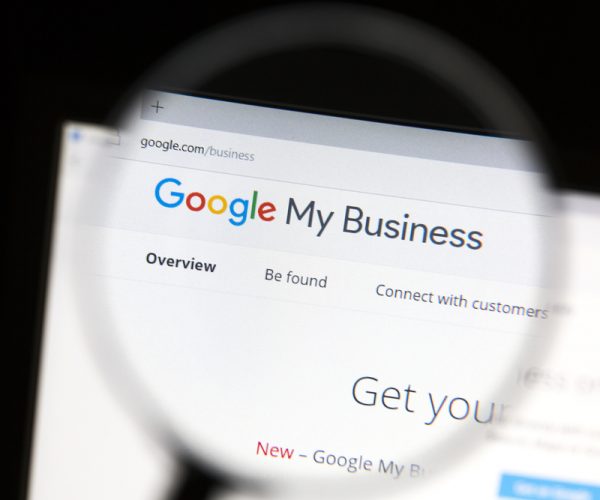
Google My Business is a powerful platform that helps you get found online by more people at the top of search results. Use Google My Business to manage your business listing on Google, connect with individuals looking for services in your area, and share updates on what’s new at your business. The best position to be in is what we call the “three-pack,” or in one of the top three positions in the map pack on page one of the search engine results page (SERP).
Don’t forget, Google owns search, and the Google Business Page (formerly GMB) is their “baby” that they love and feature and want to grow. If Google says it’s important to your business, you better bet the farm that it will become important to you at one point or another. Some SEO experts even say it is MORE important than your website!
That means getting your Google My Business verified in as many cities as possible.
Setting up satellite GMB listings in the major cities where your company operates helps ensure that potential customers can find you easily when they search online. In fact, research from BrightLocal found that 83% of consumers prefer to use Google Maps over other mapping tools when looking for local businesses.
So what does it mean for a service business owner to set up satellite GMB location pages? It means creating an additional listing on Google Maps for your business’s physical location in each major city where you plan on doing business. In other words, if you want to expand your services into New York City, then you will need to create three listings on Google Maps: one for your primary headquarters’ physical address in your primary hub city, as well as one for each of your satellite office addresses or warehouse spaces in each surrounding city that you can.
I find that most service business owners underestimate the importance of setting up satellite Google My Business (GMB) location pages (listings) in primary business hubs (major cities).
This can be a huge mistake because it’s important to be found by your target customers wherever they are searching for your services.
But don’t worry about getting a GMB in every small town around your business. Instead, put them in the major cities and/or in areas where your very best customers live.
Google has made it increasingly difficult to get new GMBs in every single town and/or neighborhood. Gone are the days when you could use a postal box at a mailbox store (and haven’t been able to use PO boxes for many years). In fact, even real offices can sometimes be difficult to get verified. An unverified GMB is useless. You need to be able to get that postcard delivered and/or have a representative at Google see your pictures, etc. You then need to do whatever it takes to get at least a few reviews on the location to start (typically shoot for a dozen) so that you send the proper “ranking signal” to Google to begin considering your GBP for the list in the three-pack on Google Maps searches. This is “prime real estate.”
One of my clients, Attic Projects, has several locations throughout California and Washington State. When we first started working together, the SEO agency and I suggested creating satellite GMB pages for each location to help them rank higher for local searches. It was initially challenging to find the qualified spaces that would count as an official business address for a verified GMB. Since they needed some warehouse spaces, that worked just fine, without the need for shared office spaces. Using the owner or sales manager’s home addresses was also an option. As they established these primary locations, optimizing the locations was all it took to begin pulling SEO rank and hence organic search traffic.

Digital Ads: PPC and Display for Multi-Location Service Businesses
Paid digital marketing channels can help your business grow and reach customers much faster and often more reliably than organic search methods.
Pay-per-click (PPC) and display advertising (like banner ads or video ads) open up an incredible opportunity to launch a new location fast and effectively. You’ll want to use a mix of both, but I am going to focus this discussion on PPC as it is the quickest and most direct way to generate leads if you don’t have the time to develop more advanced marketing funnels and comprehensive approaches.
Display ads are great for brand-building awareness, or to begin to generate top-of-the-funnel prospects who will be interested in your free information or useful lead magnets. You would then need to nurture those into leads over time. You can also use the audiences of the general display ads to determine who to re-market or re-target your more direct PPC ad campaigns.
Ultimately, you will want to combine both of these approaches, but it requires a great deal of testing and sophistication to do this properly without wasting a lot of money. You’ll want to deploy the help of a professional when approaching this with larger budgets. There is too much at stake when spending money online and Google loves to take your money, so you need to plan and monitor all your campaigns very carefully.
First, there are some important numbers to be aware of. What’s the difference between CPC and CPM? CPC (Cost Per Click): you pay when someone clicks on your ad. CPM (Cost Per Thousand Impressions): you pay based on how many people see your ads. You’ll also want to understand a little bit about impression share, Click-Through-Rate (CTR), and the more difficult to achieve KPIs, such as ROAS (Return on Ad Spend), Customer Acquisition Cost (CAC), Average Order Value (AOV) if you are selling any products, and Customer Lifetime Value (CLV). For a more detailed discussion of a service business determining CAC and ideal target lead costs, see my other tutorial called Scaling A Home Services Business Into A Multi-State Powerhouse Part 2.
PPC marketing allows you to reach customers who are already searching for your services. These customers are looking for ways to solve their problems, and they’re ready to spend money on the solutions they find. By using PPC ads, you can target them in specific locations—for example, if there’s a new population moving into town that needs certain services, you could target those people with ads that specifically address their needs.
When it comes time to update your ad campaigns and optimize them for better results (more clicks), you’ll find great insights within the Google Analytics dashboard. This feature allows businesses like yours to track conversion rates from each of their campaigns—so if one campaign is outperforming another by 50%, then it makes sense that more money should be spent on that particular campaign over time as well as any other ones currently being run at full capacity.”
Pay-per-click (PPC) marketing is a great way to get leads.
If you’re looking to get started with online advertising and don’t know where to start, PPC is often the best way to get started. It’s perfect for multi-location businesses because it allows you to target a specific audience based on location.

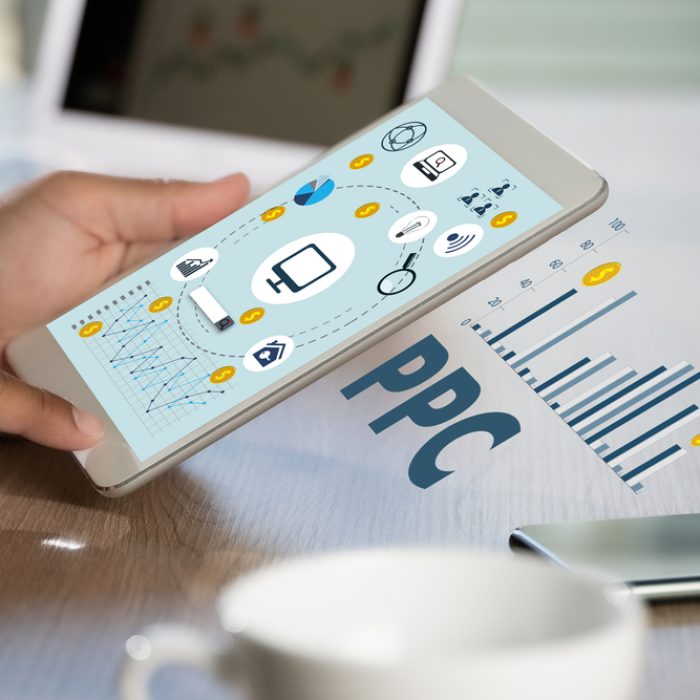
PPC is perfect for multi-location businesses.
If your business operates in multiple locations, PPC can help you reach customers in those areas. This is especially helpful when the markets are distinct from one another. For example, if you own a chain of restaurants that all have different names and menus, each location may be able to target a specific part of the population and create ads based on that market’s interests and needs.
PPC also helps you reach customers who are already looking for your services. If someone has already searched Google with keywords related to your business or service (e.g., “bird feeding” or “feeder”), they’re likely interested in what you have to offer—so why not let them know?
Finally, PPC can increase brand awareness by showing users relevant ads alongside their search results when they’re browsing online content unrelated (but not totally unrelated) topics associated with yours.
Proper Tracking with Analytics Is Essential to Calculate ROI
If you’re running a multi-location service business, there are several areas where you need to track data. Here are my recommendations for tracking PPC by location:
- Conversion Data
- Phone Calls
- Lead Forms (or whatever method you use to capture leads)
- Revenue (or whatever metric you use as a proxy for revenue)
- All of the above should be tracked on one dashboard so that it is easy to see how each location is doing compared with others. We often resort to spreadsheets to customize something that meets all of our needs
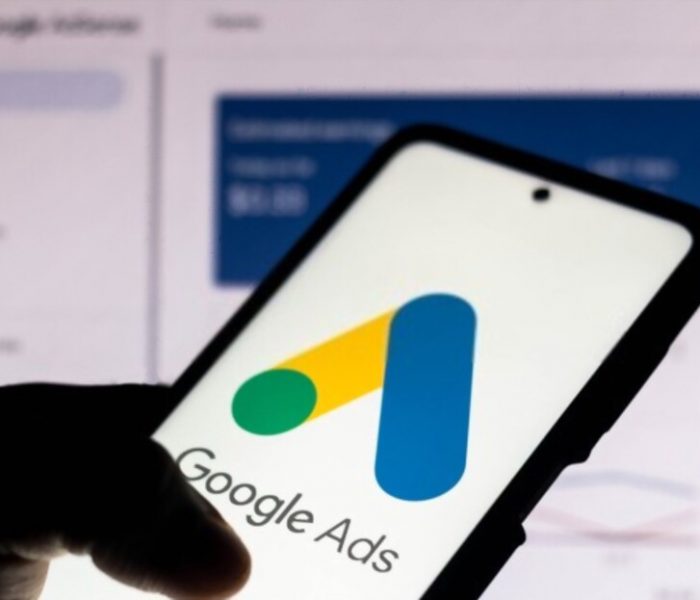
Google Services ads (Google verified and Google Guaranteed)
Google Services ads are a good way of generating leads for your business. To qualify, you must meet the following requirements:
- Your business is pre-screened
- You’re able to deliver the service within 24 hours of receiving payment from the customer
- You offer at least one service in each range (1-4 hours, 5-8 hours, 9+ hours)
Google Ads vs. Facebook Ads
PPC advertising is a powerful tool for multi-location businesses. However, it’s important to understand that there are two different types of PPC advertising platforms: keyword-focused (like Google Ads) and audience-focused (like Facebook Ads).
Facebook Ads are great for multi-location businesses because they allow you to target people based on interests and demographics. This means you can reach people who have never heard of your brand before but may be interested in what you have to offer. This is especially useful if you’re trying to grow awareness or build a new customer base.
Remember, Facebook is “interruptive” marketing. You don’t go to Facebook to see ads. You go to Google to search for things you want or to find out information about a topic that interests you. Therefore, Facebook is not necessarily great for “bottom of the funnel leads” who are ready to buy right now. However, it is great for “top of the funnel” leads who are just starting to think about your services. You can offer them a lead magnet to get them into your funnel and begin building awareness and then interest so that you can eventually build desire, resulting in action (remember AIDA?). This takes time and is more of a “farming” instead of a “hunting” approach.
The best of both worlds is to use Facebook and Google together in a multi-step, multi-media, multi-channel system to build omnipresence, where you look like you are everywhere to your ideal target audience. That way, when they are ready, you are the first company they think of calling.
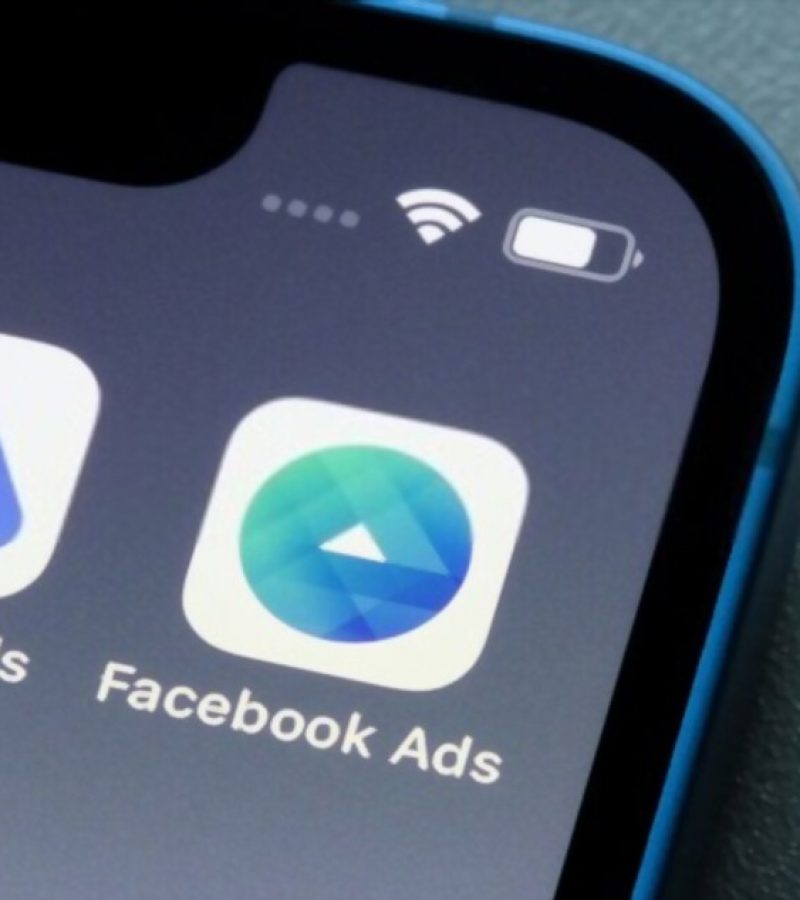

Facebook videos for exposure, like TV on the phone
Facebook is the 2nd largest search engine. With over 2 billion users and growing, Facebook is the best place to advertise your business. You can easily upload videos to Facebook and get 1 million views with our service!
Facebook video has over 8 billion views per day, and it’s only growing. It’s also the largest video platform on the planet, with more than 4 billion hours watched every month (that’s about 6 million years’ worth). No matter where you are in terms of audience size or reach, Facebook videos give you an opportunity to connect with people like never before.
Facebook Re-targeting, Re-marketing, and Facebook Lead Ads
Facebook Lead Ads are a great way to get more leads and get them quickly. The only downside is that they require a lot of planning and prep work to work effectively.
Lead ads are best for after you use video ads to create your “invisible list” of people engaged in your content (see our PPC for Multi-Location Service Businesses guide). Once you have this invisible list, it’s easy to set up lead ads with Facebook’s custom audience feature:
- Create an ad with a landing page that explains what the lead form is for and why it benefits them (e.g., learn about how we can help with XYZ).
- Set up a custom audience from people who’ve liked your page or watched your video ad (or both!). This creates an ‘invisible’ list of individuals who have interacted with your brand through social media channels—meaning they’re at least somewhat interested in what you have to offer! This type of targeting allows us much more control over who sees your message than simply running broad bid keywords would allow.

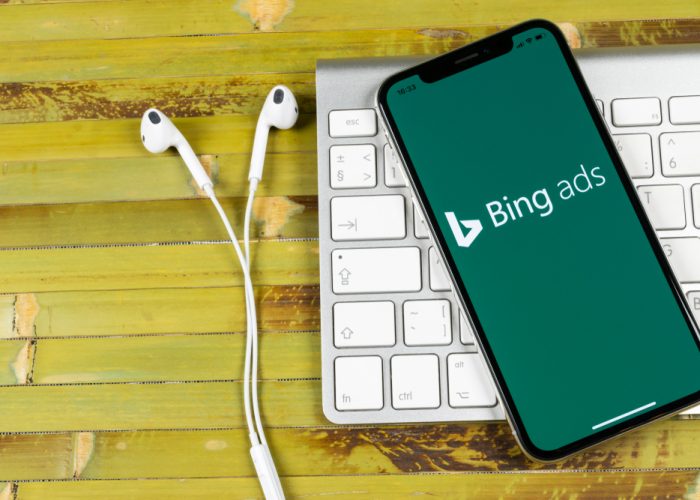
Bing Ads
Bing Ads is a great way to get some extra clicks that you may not be getting on Google. All you have to do is create a new Bing Ads campaign and then share an existing Google Ads campaign with Bing.
This will allow you to capitalize on the traffic from both search engines without spending too much time setting up the second account, which can get confusing and time-consuming if you start from scratch.
Bing/Yahoo’s search engine market share is around 20%, so it’s important to take advantage of this opportunity if your marketing budget permits it.
OTT Media
You may have been using (or at least been pitched) the new idea of “OTT.” According to Wikipedia, an over-the-top (OTT) media service is a media service offered directly to viewers via the Internet. OTT bypasses cable, broadcast, and satellite television platforms, the types of companies that traditionally act as controllers or distributors of such content.
In other words, you might think of OTT as a relatively new way to participate in an “old” media. Media salespeople and agencies will cringe at that last statement, and I admit to oversimplification, but the truth is that TV ads are not new. The big difference here is HOW people are engaging in TV.
I think the power of OTT is that you can combine this with all the latest geofencing and targeting methods that weren’t available in years past so that you can actually measure and track the performance of your video commercial ads. Although it is possible to spend all your budget on Facebook video ads, with some of the best targeting and never-ending algorithmic big-brother-scary targeting available, getting a presence on streaming video services can help supplement the rest of your paid advertising.

As more and more people watch their favorite shows via devices connected to the Internet, it is worth participating in this relatively new method.
As with all other forms of media, it doesn’t matter what it is as long as you can get and measure specific results to determine your ROI. When rolling out a new location, it makes sense to add this to your marketing mix if you have the budget to do so.
After establishing your baseline SEO and PPC campaigns, the next step is to “get back to basics” and run every fundamental you can in the new area you are launching. The following is a list of time-tested approaches that work for small businesses, as well as multi-location chains or franchises.

Local Facebook Groups: Participate and/or Start One
Chances are, there are local Facebook groups that are actively used by your ideal client right now. They could include anything from neighborhood-specific groups, buy and sell groups, garage sale groups, and more. Just go in there and add value in a “non-salesy” way and become a valued contributor to the group. When an opportunity arises for you to talk about your business, then do so. (Always add value first, though.)
If you’re not sure how to find these groups or how to use them to start building relationships and trust with your target audience, let us help (or find an agency that will). A good agency or marketing assistant can help you find the best ones for you and show you how they work so that you can start making connections with people who are already interested in what you have to offer them.
Social Media Contests and Promotions
If you’re looking to get more people in your market to notice you and your business, here’s a great way to do it: hold a social media contest.
Here’s how it works: first, choose the action that you’d really love to have people do, and choose an item or service that you know your target market wants. For example, having the client place a yard sign or balloon (or maybe even both), or a picture of a finished project with the client standing in front smiling would make a great picture.
Next, ask people to post these photos and tag your business profile page on social media. Once you’ve collected all of those photos, draw a winner from among them—you’ll be pleasantly surprised at how many people will participate in order to win something they want!
Send out an offer along with your thank-you note or gift card and the prize (so that you overdeliver on the gift by giving even more than promised). Ask the prize winners if they’ll also post a picture of them with the prize and tag you again. Try to send everyone that participates something to show appreciation, even if they don’t win one of the bigger prizes.

Here is an example:
Hey, [company name] fans!
We’re hosting a social media contest this week! We want to see what you’re doing with your yard signs. Share a photo of your yard sign on social media, tag us in it, and use the hashtag #ILove[businessname]. We’ll draw one lucky winner at random from all of the participants. The winner will receive a prize, a special offer for our services, and a gift card from [company name].
Have fun with it—and don’t forget to check out the rules below:
1) You must be 18 years or older to enter this contest.
2) To enter, you must be located within our service area (see below). You must also share a photo of your yard sign on Facebook or Instagram with the hashtag #ILove[businessname] by 11:59 p.m., November 1st, 2025.
3) A winner will be drawn at random from all eligible entries received between 12:00 am EST on November 2nd and 11:59 pm EST on November 8th, 2025.
4) The winner will be announced via @[company name] on Instagram and Twitter on November 9th by 12:00 pm EST.
More examples:
* Hey, [company name] fans! Wanna win an iPad? Send us a photo of your yard sign, and we’ll pick a winner at random. We’re so excited about this contest because we know how much you love our products, and we want to give you the chance to show them off.
* You can enter as many times as you like, but only one entry will be counted per person. You have until [Date] to enter—so get ready to show off your garden!
* The lucky winner will receive a $50 gift card code to use on their next [product/service]. We hope you have fun with this contest, and stay tuned for more contests coming soon!
Mix and match all these offers and ideas so that you can run a new contest every month and find out what combinations work best.

Use Lead Magnets (with Facebook Lead Ads)
Create a free offer on your website in exchange for people giving you their contact information. This could include things like an ebook, a free report, a real physical book, money-saving coupons, a checklist, an educational video series, a free item of value, etc. Make sure the offer is added everywhere, from social media to the footer of your email. The fortune is in the follow-up; make sure there is a great email sequence following up extensively. Add physical mail if possible.
Direct Mail (especially sales letters off of lead magnet requests)
Direct mail continues to be a proven lead generation tool; the problem is, that most companies are doing it wrong. Every direct mail piece should reference the one before it (because multi-step mail is always better than single-shot mail), have great copy and design that gives people a reason to take action, and create urgency with a limited offer. Direct mail should always be done in combination with other types of marketing (multi-step, multi-channel, multi-media marketing) in a series of 5-7 (or more) impressions over a period of time. Additionally, don’t blanket an entire area (this is expensive). You’re better off focusing on a smaller area and dripping regular marketing pieces to that area. To improve open rates, use “lumpy” mail (or 3D mail).
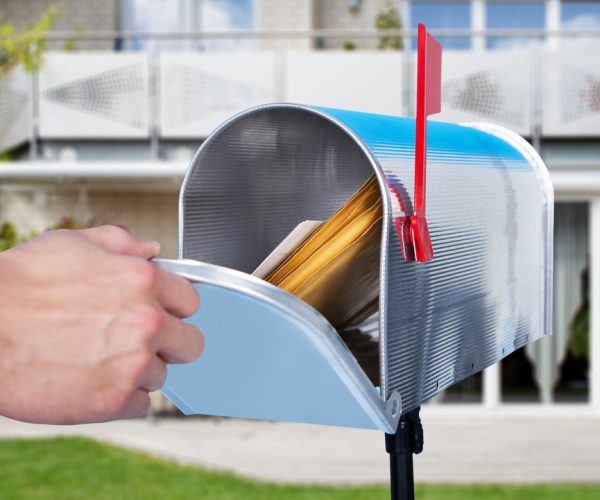
Variation 1: combined with a referral partner strategy, do an “Endorsed” mailing: for a “preventative” special offer (works even if they don’t need you yet). This is where the champion mails one letter for you to their best, targeted list and introduces you. Then you follow up with a letter sequence to offer a free problem prevention audit to avoid the 102 possible problems that can occur in your home without warning.

Revisit your brand and consider a strategic redesign
This might surprise you as an opportunity for lead generation, but a strong brand can inspire people to call you. This is especially true if you build a brand that (1) captures the attention of your ideal audience, (2) speaks clearly about the problems you solve, (3) separates you from competitors in the market, and (4) makes it simple to get in touch. With the right brand, you will be surprised at how many leads it generates (while those without strategic brand design will be skeptical.)
Your existing list
This may surprise you as a source of leads and referrals, yet it is a powerful and untapped source that most service companies completely ignore.
When contacting your current customers for follow-up calls, tell them about your plans to open a new area and ask them who they know. Of course, you want to find out anyone they have a relationship with within the new area, but finding logical referral partners is even better. Ask them if they know any real estate agents, home inspectors, landlords, etc., in the area you want to go in. Although calling all of your customers might be impractical, you can narrow your list to those people who you know are already good connectors or networkers that have a higher probability of knowing a lot of people. If you find a local “influencer” or celebrity, you can even offer them an incentive to send your message to their list or post it on social media for you. It can be surprising how inexpensive it is to get a local endorsement from a credible influencer.

Your customers may only think of you for one type of service, or maybe there are opportunities to buy from you that they’re not even aware of. Reach out to your list and cross-sell them. The very first step, for example, is to let your attic customers know that you also do crawl spaces, duct cleaning, or even solar fans, pest control, sump pumps, and electrical, and your pest exclusion clients know that you do insulation, solar fans (and so on). Customers simply don’t realize and need to be guided. Additionally, customers may not even realize that they can buy more from you. For example, if you sell electrical or mold inspections, many customers haven’t heard of it and don’t know why they’d need it. So, reach out to your existing list and educate them. Can you offer an extended warranty that the customer needs to pay for over a long period of time (which also produces continuity for your revenue)?

Referrals
Referrals continue to be one of the very best ways to get many low-cost, high-value leads. The problem is that many service companies do not ask for referrals very well. Make it part of your regular marketing and sales process to ask for referrals. You don’t have to do it after the job is finished. You can start even before the person has hired you: when they call on the phone the very first time, you can ask them something like, “Is there anyone else with the same problem—such as a neighbor—who we can also serve?” Ask before you serve them, while you serve them after the job is done, and as part of your follow-up sequence.
Another way to get referrals is by connecting with a local organization or corporation, including a hospital, college, large factory, or national headquarters. Let the company know that their employees would all receive a “Preferred Customer Discount” and extra special service just because they are employees. Organizations like this because it gives their employees a special benefit (without costing the company anything), and of course, the employees like it because they get a discount!
Affiliates
This one is so simple and so scalable! Find local companies that serve the same clientele but offer a non-competing service. For example: if you are in Attic & Crawl Space Remediation, Insulation, HVAC, plumbing, and/or electrical, consider working with a pest control company, a home inspector, a handyman service, or an appliance repair, and a locksmith. Each of these also serves homeowners too. Then, refer your customers to them (and they’ll refer their customers to you).
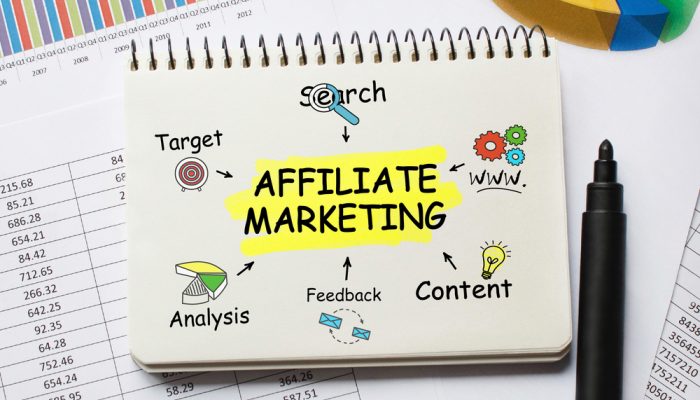
Variation 1: Pay a fee per lead and/or a simple percentage per job closed. There are so many companies out there that this is a VERY simple way to get a lot of leads, FAST. Paying for the lists or the referrals is a way to encourage the referral partner to participate better.
Variation 2: Run an affiliate contest. Offer a grand prize to the affiliate that sends the most leads in the month.
Variation 3: Swap lists and/or leads. You give your leads list for the month in exchange for theirs (or a similar size).
Variation 4: Rent a list from one of these companies (cheaper than from a list broker)
Variation 5: Sell your leads (although this doesn’t create more leads, at least it makes money and helps pay for advertising costs).
Variation 6: Focus on larger referral partners that match all your locations for sheer quantity and a closer relationship with one referral partner.
Variation 7: Focus on many smaller referral partners to take advantage of localized referrals, and have individual salespeople or sales managers make the relationships in their given territories. This can help with diversification.
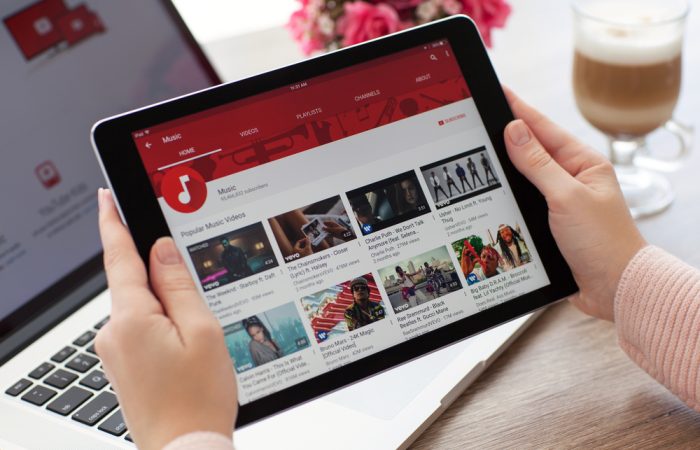
YouTube videos
YouTube videos are a great way to get in front of your audience. Record videos on topics that your audience is interested in (as it relates to your trade-lines) and post them regularly. Record one video a day regularly. It doesn’t have to be very long or very polished; just get a short video out there daily. Think of things that your audience is already searching for (for example: for an attic and crawlspace remediation business, consider videos that answer questions like “Do I need to replace my insulation in my attic?” For a plumber, “Why does my toilet keep running?” Or if you’re in HVAC, consider videos like “how to replace a filter.”) At the end of every video, make an offer and invite people to call.
Mergers & Acquisitions
In uncertain times or in a challenging economy, many companies are thinking about shutting down. You may consider acquiring the whole company or even just the customer list. When you have that list, send out a letter introducing yourself and let customers know that you’ll take care of them just as well as their previous service provider.


Lead Generation Listing and Directory Sites
The competition is stiff in your industry, right?
It may be worth “caving” and doing a deal with the Home Advisor/Angie’s List, Thumbtack, Neighborhood App, or even (Gasp!) Yelp or the BBB, specifically for the new territory you are trying to deploy your marketing into.
This is true, especially if you have a lot of competition in the area already—in that case, this can be a great way to get your foot in the door and gain some visibility.
These sites are pretty straightforward: you list yourself as a local business and pay a fee each month for their services, typically pay-per-lead or a PPC budget. The good news is that these outlets usually have good SEO practices and can help boost your search engine optimization (SEO).
The bad news is that some of these organizations run like the mafia. You not only have to pay to play but if you piss off the wrong person and/or refuse to play their game, you get demoted at best and destroyed at worst.
I have seen companies get destroyed by relying too much on these sources for leads and then get blackballed when they stop paying. Their good reviews disappeared, and their bad reviews magically were all that anyone could see.
These companies claim not to engage in these practices, but class-action lawsuits and real-world experience tell me otherwise.
Still, if you start modestly and are careful, you can play this game relatively unscathed and end up cashing in.
I recommend first trying to work your way into the Neighborhood App if there is a good following in the area that you are launching in. Getting reviews there is very good. It is a similar situation for Thumbtack. These are smaller companies, compared to the big players, and are a bit more competitive in terms of pricing. The most important things are the reviews and the “organic” side of it (if there is really such a thing). Then, if you can get a little business the organic way, and it seems to work, pour on the paid budget gasoline to act as a catalyst and blow it up as long as you can.
The results that can be achieved by properly deploying a marketing strategy
You might have heard me tell at least part of the story about the 13.8 to 17.8 Million-dollar one-year increase I happened to generate as a CMO to an attic and crawl space remediation business. In case you’ve lived under a rock for the last twenty years, that is one of the fastest-growing home services contractor niches in the country. Sometimes they are coming at it from the insulation contractor business, sometimes from pest control or pest exclusion, or even from the electrical or whole-house energy efficiency inspector angle. Either way, they are going where nobody else wants to go; the crawl spaces.
The story really started ten years earlier, when I was employed for a time as a salesperson. I jumped in those crawl spaces on my belly with the rat turds and all. I was, for a few months, the number one salesperson. If I wasn’t number one, I was number two. Eventually, I decided I didn’t like physically being in the crawl space (who does?!) and wanted to pursue higher callings, but I never lost my curiosity about this fascinating business model.
Ten years later (after mastering marketing for many service businesses), the owner offered to have me come back as their Chief Marketing Officer in charge of all revenue generation (all sales and marketing). There was no higher-level position he could have given me, and in terms of responsibility, it was one step away from being an owner.
I went into that business right before Christmas time and started going through every single nook and cranny (or crawl space) of the business, especially every single marketing and sales strategy they had ever tried. I created a 70-page, incredibly thorough marketing plan between Christmas and New Years’ eve. The office was empty, and I was slaving away, pounding on the keys of the only computer still switched on. No vacation for me. I was there to get ‘er done!
After people started to come back to work, they realized something was different. They came by my office and saw a whiteboard with an entire marketing funnel diagramed out, copies of sales letters (which I also wrote, based on interviews with the owner and salespeople, along with my own experience in sales) taped to the board, and a three-ring binder, containing the Sales & Marketing Plan on my desk.
But then reality hit me like a ton of bricks. As cool as a comprehensive written plan is, it means nothing if it isn’t executed. It means nothing if people just leave it on the shelf to gather dust (like the binders they already paid consultants to produce that hadn’t been cracked open in several years).
It also doesn’t work if there is resistance to change. And EVERY service business has resistance to change. The front desk hates change, the customer service representatives and sales guys hate change, and the service technicians and the crews hate change. The only kind of change they like is when you give them a “tip” by increasing their pay (without them having to do more work).
Therefore, I knew I had to focus on implementation! We needed quick wins to prove that the change was worth the effort.
We rebranded and added ancillary products and services to increase the average customer lifetime value and so much more.
I worked with the sales team, the front office, and the customer service representatives and developed every marketing asset and vendor relationship to create an entirely new system. Sometimes that meant hiring and firing team members and vendors. I met with the owners regularly to discuss every step and then helped to ensure that it all got done. It was grueling.
I even physically sat in the SEO agency’s office every week for several hours to work as closely as I could with their entire team.
Here are a few things we accomplished for this successful Crawl Space Remediation Insulation Contractor:
- Managed vendor relationships and budget allocations to improve outputs
- Developed a comprehensive business and marketing plan, built the marketing team, implemented strategies, and helped hire and coordinate with the sales team.
- Helped expand into new cities and territories, coordinated with legal counsel to protect trademarks, and worked with a franchise consultant to present the opportunity for national expansion as a valid option for ownership.

…And it worked.
I am proud of the fact that I helped position and drive this Crawl Space Remediation, Insulation Contractor, and Pest Control business of the Pacific Northwest to (by FAR) the number one company in 2017 and helped the Company go from 13.8 Million to 17.8 Million in one year.
The owner decided to sell the company and cash in on a big payday, so it was a happy ending for him.
Please feel free to investigate my LinkedIn profile to see my resume, work history, and reviews: https://www.linkedin.com/in/jesse-stoddard/.
How to outsmart competitors who are all doing the same marketing stuff as each other.
You can “Grow Faster With a Fractional Chief Marketing Officer (CMO).” You can let us create, manage and deploy a marketing strategy to help you reach your goals faster.
What is a Fractional CMO?
A fractional Chief Marketing Officer (sometimes referred to as an outsourced CMO or part-time CMO) is a marketing executive serving businesses by leading marketing strategy, sales development, growth opportunities, and heading the marketing department. Businesses use fractional CMO services because they do not need a full-time CMO but still require expert strategy and leadership.
Businesses enjoy the flexibility that a fractional CMO provides. It often makes sense to bring in a fractional chief marketing officer instead of a full-time CMO. This can be for financial reasons, as a typical full-time CMO salary can cost far more than $252,930 per year. Or because the work needed to be done by the CMO does not require a full-time position—and the dirty little secret is that most companies under fifty-million dollars in revenue don’t need a full-time CMO anyway!
EXPERTISE YOU NEED: Don’t rely on inexperienced marketers to dictate your business’s overall marketing strategy. Bring in a Fractional CMO to provide a comprehensive marketing plan for your business.
COST YOU CAN AFFORD: You don’t need a top-heavy organization with a full-time CMO on staff. A fractional CMO will provide you with the insights and reporting that you need—without the high price.
SELF-MANAGING EXECUTIVE: A CMO will lighten your workload by managing all aspects of your company’s marketing department. From vendors to employees, the CMO acts as an executive.
Fractional CMO Responsibilities
- Developing the marketing strategy for both the short-term and long-term.
- Deciding and committing to which marketing strategies are best for your business, such as SEO, content marketing, paid advertising, Google PPC, Bing, Facebook, social media, email, direct mail, a podcast, etc.
- Solving marketing problems that will arise and need to be resolved quickly.
- Leading the marketing department and inspiring team members.
- Hiring new employees and building out your team for success.
- Working with outsourced agencies leaning on their experience and holding them accountable.
- Your Fractional CMO should have a wealth of marketing and managerial experience. Therefore, the Fractional CMO should be the natural leader of the marketing team.
- In addition to leadership qualities, the Fractional CMO is to be seen as the c-suite level marketing strategist who helps organizations achieve their marketing goals.
- As a Fractional CMO, I will work closely with both your organization’s leadership team and the marketing talent executing the marketing tactics on a day-to-day basis.

Benefits of a Fractional CMO
How far do you want to go?
If you are launching a big project and don’t have the time to do old-fashioned prospecting, or if you’ve already exhausted your existing contacts but need to find new business fast, a fractional CEO may be able to help you. A fractional CMO expertly knows how to expand a business. It’s what they do.

Expand nationally to different cities or get national coverage.
With a Fractional CMO, you can expand to multiple cities, counties, areas, regions, and states without breaking the bank as you would have to with a full-time CMO. Using a fractional CMO allows you to get the results that you need so that you can expand your business in any area of the country or even in different countries.
As a business owner, you know the value of acquiring new customers. The problem is that you don’t have the time to manage all the employees and vendors. That’s where a Fractional CMO comes in handy. With a fractional CMO, you get to be the master and commander of your marketing strategy and teams without having to be everywhere and be all things to all people. You are wasting your time going the extra mile when someone already went there for you.
If you own a thriving home services business and want to expand farther and in more territories than ever before, check out www.GetLeadsFirst.com.

